- News
- Reviews
- Bikes
- Accessories
- Accessories - misc
- Computer mounts
- Bags
- Bar ends
- Bike bags & cases
- Bottle cages
- Bottles
- Cameras
- Car racks
- Child seats
- Computers
- Glasses
- GPS units
- Helmets
- Lights - front
- Lights - rear
- Lights - sets
- Locks
- Mirrors
- Mudguards
- Racks
- Pumps & CO2 inflators
- Puncture kits
- Reflectives
- Smart watches
- Stands and racks
- Trailers
- Clothing
- Components
- Bar tape & grips
- Bottom brackets
- Brake & gear cables
- Brake & STI levers
- Brake pads & spares
- Brakes
- Cassettes & freewheels
- Chains
- Chainsets & chainrings
- Derailleurs - front
- Derailleurs - rear
- Forks
- Gear levers & shifters
- Groupsets
- Handlebars & extensions
- Headsets
- Hubs
- Inner tubes
- Pedals
- Quick releases & skewers
- Saddles
- Seatposts
- Stems
- Wheels
- Tyres
- Health, fitness and nutrition
- Tools and workshop
- Miscellaneous
- Buyers Guides
- Features
- Forum
- Recommends
- Podcast
feature
 Header
HeaderI’d never cycled up an Alpine pass before. Here’s what I learned
I like France. I like the weather, I like the wine, I like the ferocious commitment to serving up ham and cheese in as many different forms as possible. I also like the mountains. However, one thing I had never done before this summer was ride a bike up a proper, full-on, oversized Alpine mountain.
I’ve been to the Alps a number of times before, usually in winter, and I’ve also cycled elsewhere in France a fair bit – mostly when riding from the northern coast down to the southern coast with my dad a few years ago. (He was 70 at the time. Chapeau, Dad.)
Riding up Alpine passes is a thing though, isn’t it? Riding up Alpine passes is very definitely a big and obvious cycling thing. I know it is. I have seen the Tour de France with my eyes and read cycling articles also with my eyes.
It felt like something I wanted to experience with my legs, so I went to Samoens, which is at the exact bottom of the Col de Joux Plane.
Could you cycle up an Alpine pass?
It was easy enough to think through my previous cycling experiences, mash a few of them together in my head and draw the assumption that I could easily ride up an Alpine pass.
At the same time – and given that I had never actually ridden up an Alpine pass, I was almost equally capable of persuading myself that it was some unimaginable feat that was entirely beyond me.
Key to this was a memory of cycling up a not-particularly-steep 10km climb in Provence and really, properly labouring by the end of it. The circumstances were that it was 37 degrees, I’d run out of water about an hour before and I’d just finished cycling the entire length of France. (I don’t know what gearing I was using then either.)
These mitigating factors did somewhere near nothing to mitigate my apprehension. All I could do was compare that fairly innocuous gradient with the ones we’d be tackling this time around.
And this is the first thing I learned about riding up Alpine passes: you form insanely strong opinions about very minor changes in gradient. (More on this later.)
Le Col de Pierre Carrée
The first climb we attempted was the Col de Pierre Carrée. We chose this for two reasons.
- While it was unarguably long, at about 28km, it wasn’t quite so steep as some of the others in the area, averaging 4.9%. The full 28km comprises a couple of shorter climbs and then the proper road sign countdown starts with about 14km to go. That stretch is pretty consistently 6-7%.
- Le Col de Pierre Carrée (sort of) means Square Pierre Pass. One of my riding companions is also called Alex, but we entirely arbitrarily rebranded him “Pierre” some years ago to avoid confusion. As you’d imagine, we felt obliged to ride the Square Pierre Pass.
How did it go? Um. It was hot. And we maybe started a little too fast (particularly considering that my other friend, Marcus, hadn’t ridden a road bike since 2017).
With about 6km to go, Marcus expressed a desire to go and sit in the shade for a moment. Upon hearing this, Pierre – who had been cycling five yards ahead of us, looking for all the world like nothing was remotely troubling him – instantly climbed off his bike and went and sat in a stream.
We completed the climb at a more leisurely pace and it was great and lovely and I immediately felt like we hadn’t really done it properly because we’d stopped.
Afterwards, we sat outside a café until a giant road-digging-up machine went past and dug up the road, showering the whole place in powdered asphalt.
I had a cheese and ham pancake. (Other ways in which I ate cheese and ham this holiday: tartiflette x1, panini x1, “pain au lard” x 1, pizza x3, sandwiches x400.)
Here’s the pain au lard, which I had at the foot of the Pierre Carrée. It was bloody delicious.
Le Col de la Ramaz
The day after going up the Pierre Carrée, I felt unusually fine. This is the second thing I learned about riding up Alpine passes: you can probably do more of them than you think.
A thousand metres of climbing in the Peak District generally leaves me fully aware that it’s happened the following day. Climbing on the consistent gradients of the Alps, you simply don’t do as much damage to yourself.
You could. You definitely could. But if you know it’s going to take you about an hour to get from bottom to top, you’ll find you naturally measure your effort and that this particular effort isn’t as debilitating as the effort a British road will trick you into.
On a long climb, you settle into a rhythm; a rhythm that is by necessity sustainable. Sustainable efforts are also a lot more repeatable. Throw in a lot less sprinting for the top - because you only very rarely find yourself at a 'top' - and you've got a nice recipe for plenty more riding than you probably envisaged.
I couldn’t go out the next day though because I have a family and am not a complete arsehole.
I went out the day after instead.
Marcus was off mountain biking and Pierre had tested his legs the day before and not been 100 per cent delighted with them, so we hit on a plan where I’d ride to Morzine over the Col de la Ramaz and he’d come some of the way with me but then take “the low road” to the same destination. (Turned out “the low road” involved 11km at 5%)
The Ramaz was a bit more than that – 14km at 7%. Although he was going a different way, Pierre made a point of climbing it as far as Messy because he entirely understandably wanted to set himself up for some puns later on.
He wisely missed out on the 5km at 9.5% that comes halfway up. Even with compact gearing I did not find this stretch magnificent. (Top tip: always try and own a mediocre bike. That way if you hire one on holiday, it’ll probably be better than yours and it’ll feel like a treat. For much the same reason, never buy too large a television. You’ll quickly become accustomed to it and all that’ll happen is you’ll feel mildly irritated whenever you’re watching something round at a friend’s house.)
I was happy to get to the top without stopping and exchanged obligatory summit photo-taking duties with a bunch of blokes from either Normandy or Brittany – I’ve forgotten which.
I then settled in for the long descent to Morzine, which turned out not to be a long descent at all, but in fact a second climb to the Col de l’Encrenaz, which I had foolishly assumed was a mere staging post midway up the climb from Morzine to the Ramaz.
The Encrenaz was a lot more irregular and infuriatingly like riding in the Peaks, only hotter. It did however bring the greatest highlight of my entire trip, which was this guy.
I spoke to two other cyclists while I was refreshing myself. Both were training for the Tour d’Étape.
Main thing I’ve learned about people doing the Étape: they absolutely bloody love talking about the Étape.
The first guy talked me through the entire route. The second guy talked me through his entire training, while simultaneously giving me absolutely zero sense of how fit I would need to be to complete the event, which was about the only thing I really wanted to know.
It’s nice to stop and chat to people, but towards the end of the conversation I was becoming acutely aware that I was going to be very late meeting Pierre and I also wanted this guy to ride away before I took a photo of the water-spewing unicorn/alpaca thing.
Le Col de Joux Plane and Avoriaz
A couple of days later, we felt it was time to tick off the Joux Plane, the best-known climb in the area and among the nastiest. (11.5km at 8.5%)
Two men passed us on the lower slopes: a young man – out of the saddle and seemingly intent on maintaining that all the way to the top – and a much older guy.
Both were in their own ways remarkable, but I was far more struck by the latter. Maybe if he were a younger man, he would have looked sickly thin, but his advanced years instead gave the impression that this was a man progressing to becoming a skeleton in instalments.
It was pretty clear he had done this before. Many times. The guy was just skin, bike muscle and bone. This was the third thing I learned about riding up Alpine passes: weight matters.
Okay, I know that we all know that already. I knew that already too. I just maybe didn’t properly appreciate it fully. Climbing in the Alps, you’re not short of time to dwell on it.
Pierre and Marcus are both shorter and thinner than me. The more we progressed, the more I started to feel this. I just couldn’t shake the idea that even if we were moving at the same speed, I was doing more work than them.
How is that fair? That is not fair. (Stupid oversized skeleton, stupid fat arse, stupid love of ham, cheese and beer.)
I also learned that gearing matters, which is another very obvious thing that you and I both already know, but which I again started to appreciate rather more. Pierre and Marcus both had triples and even if my Scott Addict was a little more upmarket, there were definitely quite a few occasions when I thought, ‘I want to be able to pedal that quickly.’
When you're in the UK and only climbing for five or ten minutes at a time, you can deploy a few extra muscle fibres and to hell with the consequences. However, when you find yourself halfway up a mountain pass, riding a kilometre at 10% with another half-hour of climbing ahead of you, this doesn't seem a particularly good way of going about things.
I'd go further than that. It actually starts to feel colossally backwards that you're effectively allowing your bike to inflict a cadence on you. You'll probably go slower overall.
(Flipside: Pierre came home and immediately bought a new, more forgiving cassette for his own bike. He later tetchily concluded that it made “sod all difference” on the irregular ramps around his home. Some terrain is tough no matter what gear you're in.)
For what it’s worth, here are my gradient gradings. These are the thoughts I would have whenever I saw a kilometre marker notifying me of what was ahead.
- 5% - Nice
- 6% - Fine
- 7% - Tolerable
- 8% - Hmm…
- 9% - This better not go on for long
- 10% - Too much
We bustled to the summit with cod competitiveness and then did the climb from Morzine to Avoriaz for good measure. This was kind of similar but about 1% shallower the whole way and therefore, in relative terms, fairly pleasant. (Although it has to be said that Avoriaz feels a little post-apocalyptic outside ski season.)
We descended the Col de Joux Verte, which was fairly delightful-looking.
After that we went home to finish off the last of the week’s cheese and ham.
To put the physical challenge of Alpine cycling in perspective for those who’ve never done it, this last ride was about 95km with 2,500m of climbing. A few weeks later Marcus and I rode 85km round Cheshire with about 500m climbing and he said he was more tired at the end of that than he had been after the Joux Plane and Avoriaz.
Maybe it was the weather, maybe it was the consistent gradients, maybe it was his triple chain ring, or maybe it was the pizza we had in Morzine. I don’t know.
Alex has written for more cricket publications than the rest of the road.cc team combined. Despite the apparent evidence of this picture, he doesn't especially like cake.
Latest Comments
- wycombewheeler 20 sec ago
Sounds like Mr Schiavone (famous ancient Welsh clan, the Schiavones) understands English perfectly well, and should have had no trouble deciphering...
- wycombewheeler 3 min 40 sec ago
The point about pedestrians and dog walkers etc still stands, because it is a London road not an empty country road. Sometimes on club rides we...
- mitsky 4 min 6 sec ago
Tell us that motorists are not paying their fair share based on the damage they cause... without telling us....
- john_smith 11 min 8 sec ago
The numbers you linked to relate to pedestrians. What about the other road users?
- stonojnr 20 min 38 sec ago
Yes, even if it just encouraged drivers to leave only 1m, not 1.5m, that's still probably 40-50cms more than most of us get, and I'd be totally ok...
- john_smith 51 min 25 sec ago
Why are you so damned rude? What is your problem exactly?
- David9694 1 hour 39 min ago
We’re on about things that happen only occasionally, like crashes involving bikes planes and trains - things that happen wholesale like anything to...
- Matthew Acton-Varian 2 hours 5 min ago
Actually Zero Friction Cycling's independent test show that thanks to new technologies (metallurgy, coatings, manufacturing tolerances etc) that...
- hairyairey 4 hours 47 min ago
Brackets around "killed by her boyfriend" I think makes it more readable. There's just too much going on in this sentence.
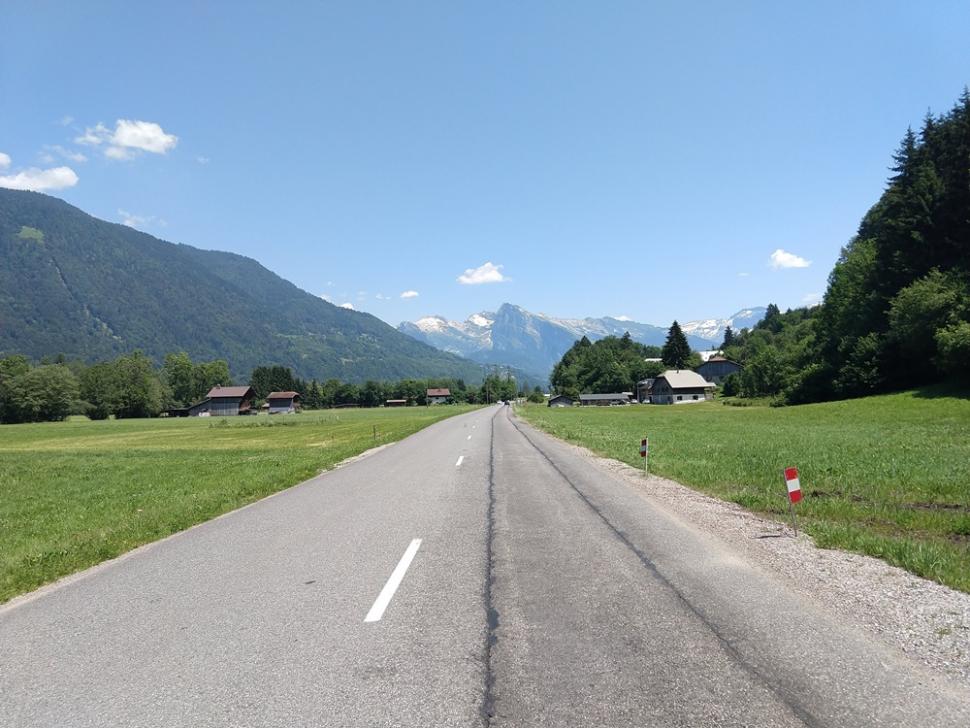
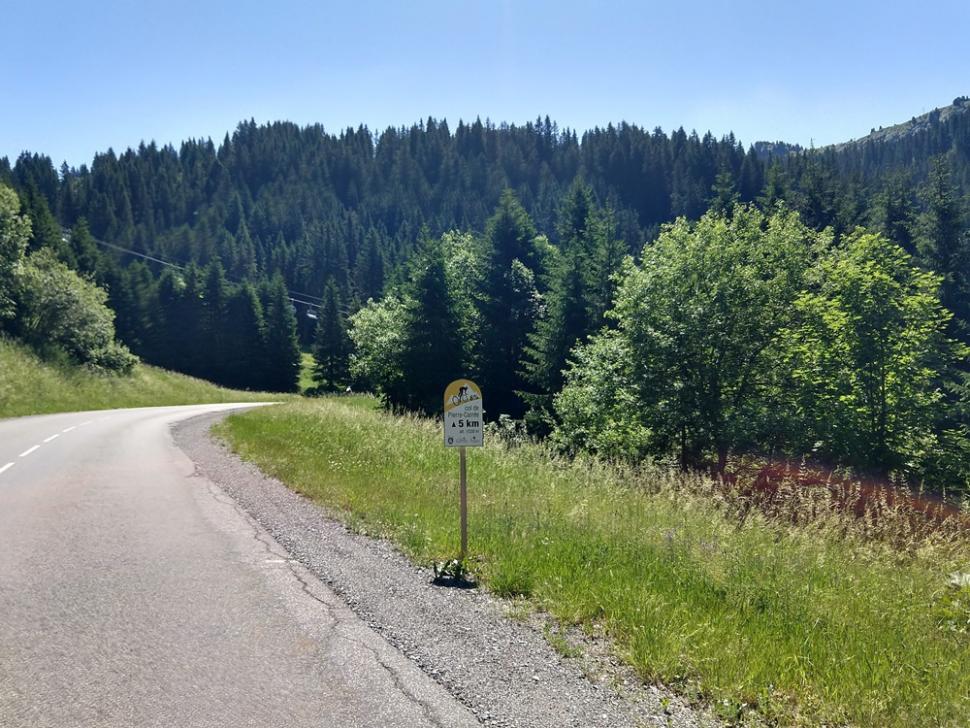
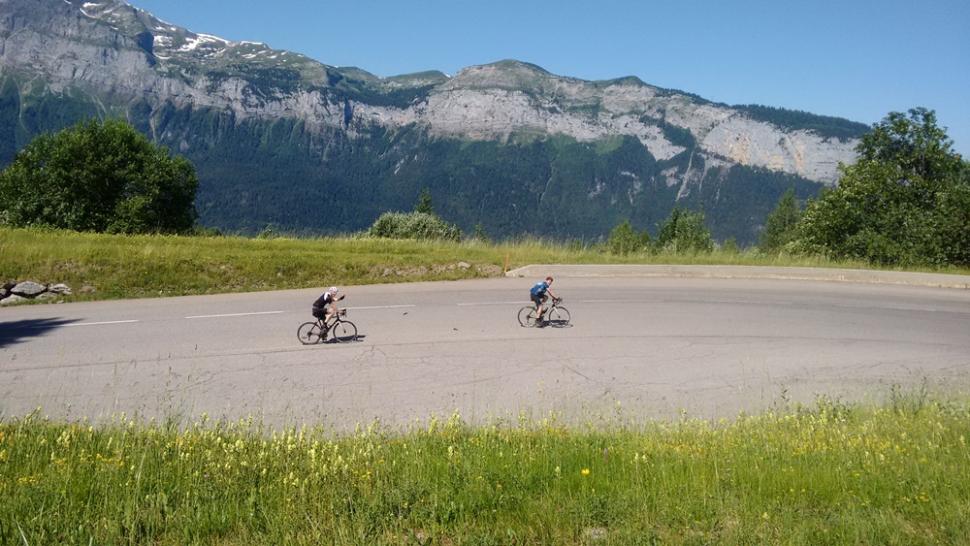

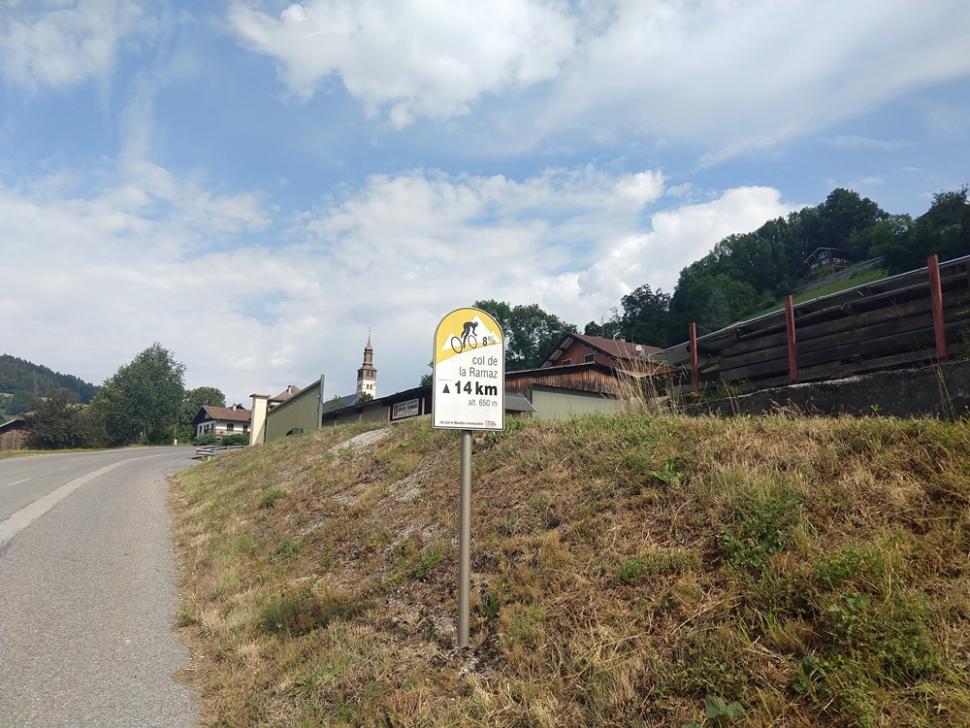


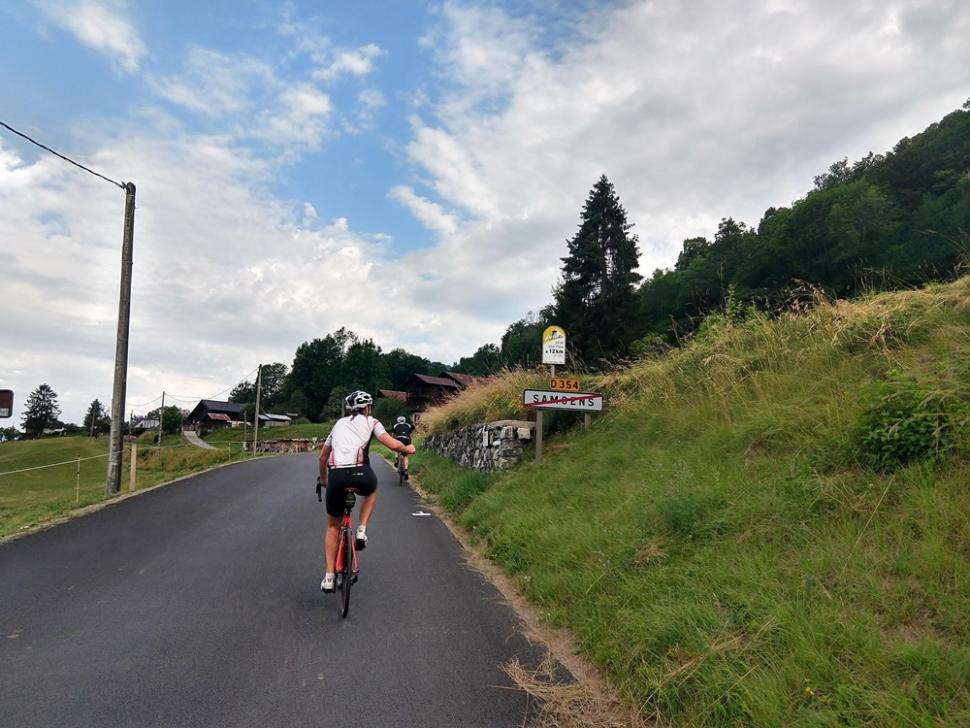
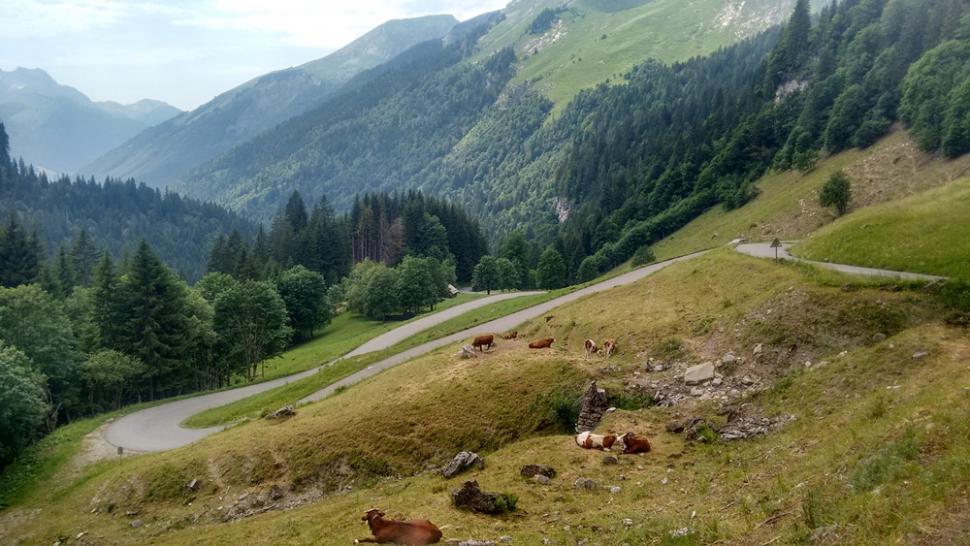
Add new comment
39 comments
I had a stupendous crash descending the joux plane into morzine many years ago. Woke up in a ditch. Three days of concussion followed. Great times.
I like descending fast but I'm not in a race so don't need to push the envelope and nor do I to get my kicks. Sadly far too many people take an incrementally bit more risk than they should, so fast descents which mean higher speeds than some riders are used to plus maybe tight hairpins/steep drops and no barriers (that's before you introduce motor traffic, animals, road surface imperfections etc) too often ends in an off/serious injury or worse - I'm not saying this is you but it's generally the case
The thinking time is reduced due to speed so judgement of braking distances and even the line can be significantly harder to get right, repeat that in a short space of time and add in fatigue and whilst not quite inevitable it increases chances of crashing massively.
Excellent article - thoroughly enjoyed reading it!
Getting to know a climb makes a big difference. You can more easily ride the climb the way it suits you best I.e you know when you can give it some stick and the best places where you can get some respite. I love climbing up cols and if it’s a new one I just take it easy and enjoy the ride . If it’s one I know and if I’m feeling good I will go for it. Never stop on the way up only on the way down to take some photos if the scenes are nice . Nice is my favourite place although lucca was pretty good as well . But Nice has climbs at your door . You can nip out for 40 minutes and go do a climb and come back home which is great if your with non cycling friends or family.
I know the area very well, I've been visiting it every summer since 2010, we're going back next year also. I rather liked Pierre Caree, you can make it harder by descending into Flaine at the end, then come back up (but why? ).
).
Also, possibly the hardest climb in the area, harder than Joux Plane, is Plateau des Saix / Samoens 1600 on the other side of the valley from the Joux Plane. It is very hard, but great views from the top where you can watch the parapenters launch.
Joux Plane was my first ever col, I was pretty worried about tackling it (I'm a terrible climber), it was hard but as you experienced, alpine cols tend to be well graded, just find a rhythm.
Nice write up, thanks.
Yes, we clocked the Samoens 1600 one and I did suspect it was harder than the Joux Plane, going by the numbers. Given the choice, we figured we'd do the slightly less hard one that people had heard of, but given another day I reckon we'd have had a go at that one too.
As someone who is also on the large side, the climbs where the gradient is fairly steady are much easier. Compare, say, Alpe d'Huez (which is a bit nasty for the first 3 miles, but after that pretty steady) with, say the Col de la Croix de Fer from the South where it goes up and down, has stretches of well over 10% and is generally nasty.
I took my son out the Alps when he was 15 (child abuse) and his conclusions were:
- Alpe d'Huez is really too easy to be an HC
- The drivers are nice to you
- The Telegraphe/Galibier double is really hard
kil0ran, apologies if you already knew this but the "lard" in "pain au lard" is a sort of diced, fatty bacon (i.e. a bit of pig muscle in there). So it's not the same lard as in lardy cake (100% pig fat) . All good though!
Pain au Lard, where has that been all my life? Looks epic
Not a patch on a decent west country lardy cake I bet but always good to have a savoury lard option.
Pages